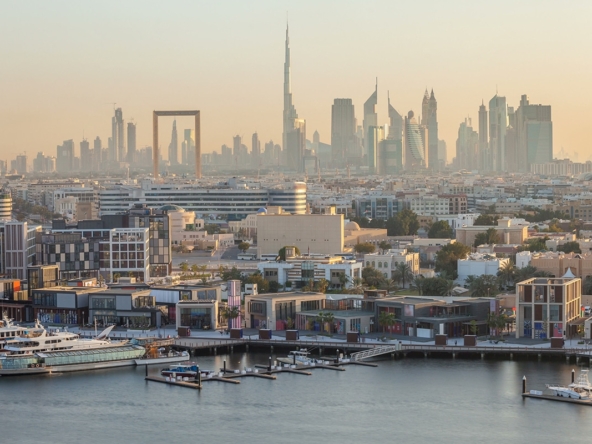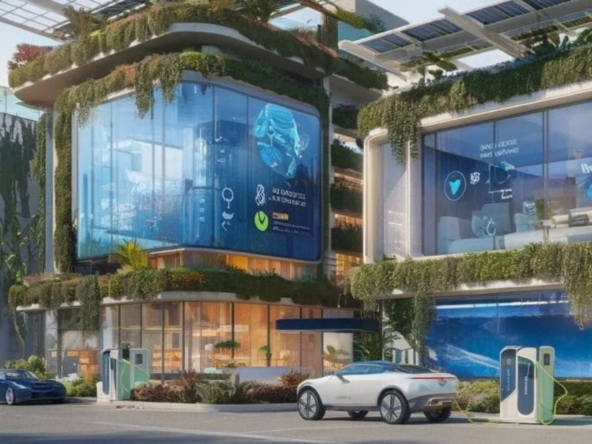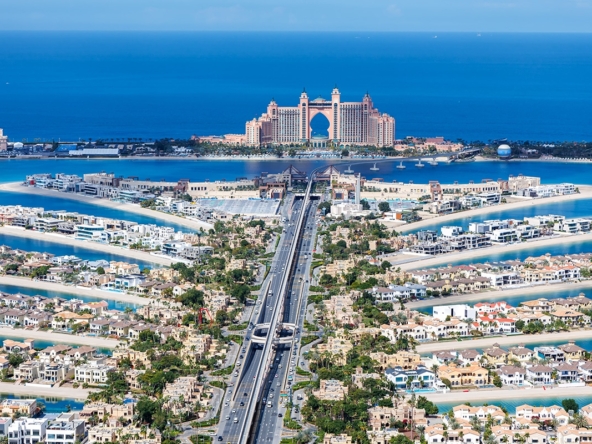The UAE’s commercial real estate market is undergoing a profound transformation, with the country’s appeal to international businesses stronger than ever. In the first half of 2024, about 34,075 new companies registered in Dubai, marking a 5 per cent increase year on year amid growing interest from global firms.
The UAE’s Commercial Real Estate: A Dynamic Transformation
The United Arab Emirates is witnessing a remarkable evolution in its commercial real estate sector, solidifying its reputation as a global business hub. In the first half of 2024 alone, Dubai registered an impressive 34,075 new companies—reflecting a 5% year-on-year growth. This surge highlights the increasing interest of international businesses in the region, drawn by the UAE’s business-friendly environment.
Adding to its appeal, the UAE’s non-oil GDP is projected to grow by 4% in 2024, as reported by the Central Bank. This milestone underscores the country’s ongoing efforts toward economic diversification, making it a magnet for foreign investment.
But as businesses adjust to the post-pandemic landscape, their workplace preferences are evolving. A pivotal question looms: Will hybrid work remain a dominant model, or are we heading back to traditional office environments?
The Impact of Hybrid Work on Office Spaces
The pandemic reshaped workplace dynamics, ushering in a lasting shift toward flexibility. Many companies now prioritize adaptable workspaces, fueling demand for co-working hubs like The Executive Centre, Cloud Spaces, and renowned operators such as Servcorp, IWG, and WeWork.
These flexible spaces offer scalability, making them particularly appealing to start-ups and businesses entering the market. This shift marks a departure from rigid office setups, paving the way for more dynamic and collaborative environments.
Prime Locations See Record Demand
Despite the rise of hybrid models, premium districts like DIFC, Downtown Dubai, and Business Bay are thriving. Occupancy rates for Grade A office spaces have soared to nearly 97%, with rental values skyrocketing by 25% year-on-year in Q3 2024. Business Bay and Downtown Dubai have seen exceptional rental growth, increasing by 44% and 36%, respectively.
This surge reflects a renewed commitment to in-office operations, albeit with a modern twist—greater flexibility in leases and office layouts.
Sustainability: A Key Priority
As environmental consciousness grows, businesses are gravitating toward office spaces that align with their sustainability goals. Buildings equipped with green certifications, energy-efficient systems, and wellness features are in high demand. These preferences not only address regulatory requirements but also foster employee well-being, resonating with today’s environmentally-aware workforce.
Secondary Markets on the Rise
Secondary business hubs, such as Dubai Science Park and Dubai Investments Park, are experiencing a revival. With rental growth of 37%, these areas offer cost-effective alternatives without compromising on quality. This trend underscores a shifting office market landscape, where both affordability and employee satisfaction play pivotal roles.
Challenges in a Booming Market
While the commercial real estate market is thriving, challenges persist. Limited supply in prime districts has led to significant rent hikes, which can strain lease negotiations and tenant retention.
Additionally, the shift to hybrid work models has prompted some companies to downsize or reconfigure their office spaces. This has compelled landlords to offer more adaptable layouts and flexible lease terms to stay competitive.
Future Outlook
Looking ahead, demand for Grade A spaces in prime districts is expected to grow, while secondary markets may stabilize, offering budget-conscious businesses viable options. Developers will need to focus on designing versatile office spaces that seamlessly blend collaborative areas with private work settings.
The UAE’s unwavering commitment to innovation, infrastructure, and an open business environment ensures that its commercial real estate market will remain vibrant. However, the shift isn’t just about hybrid versus traditional workspaces—it’s about creating environments that enhance productivity, meet sustainability standards, and cater to the modern workforce.




